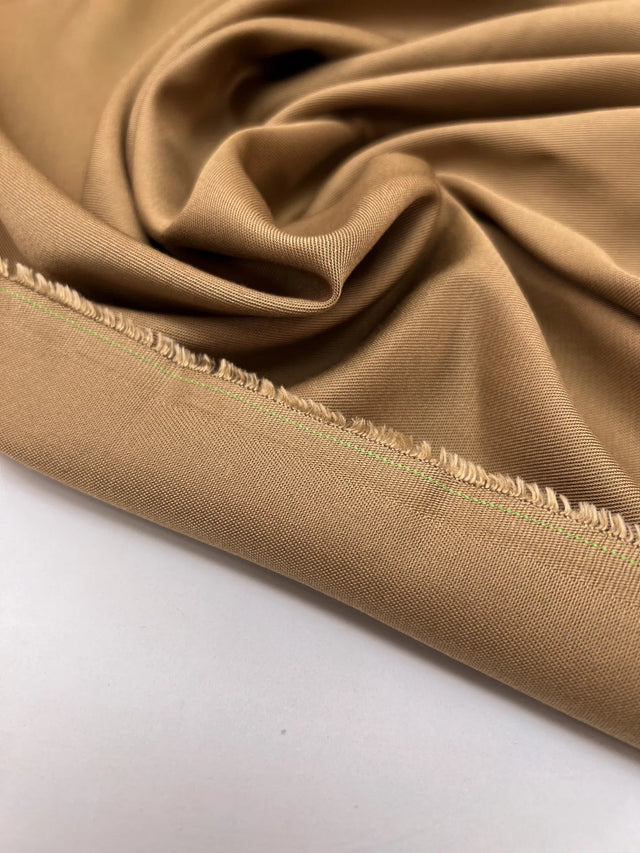Warum Deadstock wichtig ist
Die Modeindustrie trägt maßgeblich zur Umweltzerstörung bei. Die Herstellung neuer Textilien verbraucht enorme Mengen an Wasser und Energie, und wenn ungenutzte Materialien auf Mülldeponien entsorgt werden, zersetzen sie sich und setzen schädliche Gase frei. Indem wir uns für die Verwendung von Restposten entscheiden, vermeiden wir die Notwendigkeit einer Neuproduktion und reduzieren die Menge an Textilien, die auf Mülldeponien landen. Das hilft:
-
Sparen Sie erhebliche Wassermengen.
-
Reduzieren Sie die Emissionen von CO₂ und CH₄.
-
Geringere Gesamtverschmutzung und Ressourcenausbeutung
Berechnungsbeispiel: TENCEL™-Shirt
Um die Auswirkungen der Verwendung von Restpostenstoffen zu verstehen, betrachten wir ein typisches Beispiel: ein Hemd aus TENCEL™ (einer nachhaltigen Faser, die aus Holzzellstoff gewonnen wird).
Umwelteinsparungen durch die Verwendung von Restbeständen für 1 TENCEL™-Shirt:
| Auswirkungsbereich | Durchschnitt für Neuproduktion | Verwendung von Restpostenstoffen | Ersparnisse |
|---|---|---|---|
| Wassernutzung | ~2.500 Liter | ~0 Liter | 2.500 Liter gespart |
| CO₂-Emissionen | ~2,1 kg | ~0,5 kg (Transport/Nähen) | 1,6 kg CO₂ eingespart |
| CH₄ (Methan)-Emissionen | ~0,05 kg (bei Deponierung) | ~0 kg | 0,05 kg CH₄ eingespart |
Diese Werte basieren auf konservativen, branchenüblichen Daten aus seriösen Instrumenten zur Umweltanalyse.
Wie wir unsere Wirkung messen.
Unsere Nachhaltigkeitsdaten basieren auf Berechnungen, die Durchschnittswerte für jedes Material verwenden. Dies beinhaltet die Umweltbilanz von:
-
Herstellung neuer Stoffe (wie Baumwolle, Viskose, TENCEL™, Polyester usw.)
-
Der Zersetzungsprozess auf Mülldeponien, bei dem sowohl CO₂ als auch Methan (CH₄) freigesetzt werden, ein starkes Treibhausgas.
Unsere Datenquellen
Wir geben nicht einfach nur Behauptungen ab – wir nutzen international anerkannte Methoden, um unsere Auswirkungen zu verfolgen und zu überprüfen:
-
Lebenszyklusanalyse (LCA): Eine detaillierte Analyse der Umweltauswirkungen eines Produkts von der Herstellung bis zur Entsorgung.
-
Umweltproduktdeklarationen (EPD): Verifizierte Dokumente, die die Umweltdaten von Materialien darstellen.
-
Weltklimarat (IPCC): Die weltweit führende Instanz für Klimaforschung und Treibhausgasemissionen.
Eine kleine Wahl, ein großer Unterschied.
Indem Sie Produkte aus Restpostenstoffen wählen, setzen Sie nicht nur ein modisches Statement, sondern unterstützen auch eine intelligentere und verantwortungsvollere Industrie. Jeder Meter wiederverwendeter Stoff bedeutet weniger verschwendetes Wasser, weniger freigesetzte Emissionen und einen weiteren Schritt in Richtung einer saubereren und nachhaltigeren Zukunft.
Ein einziges Hemd kann 2.500 Liter Wasser sparen und verhindern, dass fast 2 kg CO₂ in die Atmosphäre gelangen. Stellen Sie sich die kollektive Auswirkung vor, wenn Millionen von Kleidungsstücken auf diese Weise hergestellt würden.
Gemeinsam können wir dafür sorgen, dass Mode nicht länger Teil des Problems, sondern Teil der Lösung ist.


